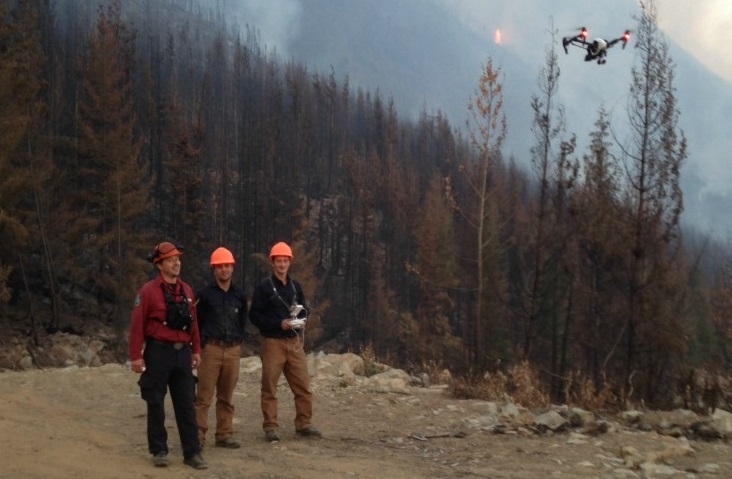In previous years unmanned aerial vehicles (UAVs), better known as drones, have been a significant thorn in the side of crews battling B.C. wildfires.

Back in 2015, rogue drones forced the grounding of firefighting helicopters on at least two occasions.
But this year, the devices have been playing an expanded role in helping tackle the fires that have scorched an area larger than Prince Edward Island.
It’s the third year of a pilot project that has seen the BC Wildfire Service partner with private contractors, including Kamloops-based Hummingbird Drones.
Fire information officer Ryan Turcot said the devices have been getting more use than usual this year.
“UAVs have assisted so far this year during the night time with infrared scanning and fire perimeter mapping on about 13 wildfires, throughout mainly the Kamloops and Cariboo fire centres.”
That effort has included some of the province’s worst fires, including the Gustafsen Lake fire, the White Lake fire near Williams Lake, and the fire complex that threatened Princeton.
The devices, which are equipped with infrared cameras, have been used primarily for mapping and hotspot detection, Turcot said.
WATCH: Drone footage captures B.C. wildfire destruction at Loon Lake

Drones provide fire crews with several advantages, particularly that they can be flown safely at night, allowing survey work to be done long after regular aircraft have been grounded.
“That does give us a means of producing some map products for our crews for really first thing in the morning,” Turcot said.
Turcot said the devices have also freed up aircraft to do other work, and add an element of safety by keeping helicopters away from active fires.
But while Turcot said the devices have been helpful in every case they were used, he stressed that the province is still using them in an exploratory capacity and they are still secondary to traditional aircraft.









Comments